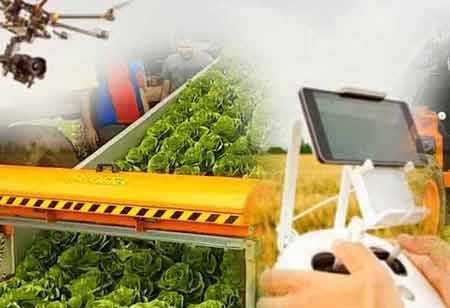Thank you for Subscribing to Agri Business Review Weekly Brief
The Modern Age Of Agriculture With Indoor Vertical Farming
As the world’s population grows exponentially, our total supply of fruits and vegetables falls 22% short of global nutritional needs

By
Agri Business Review | Tuesday, October 11, 2022
Stay ahead of the industry with exclusive feature stories on the top companies, expert insights and the latest news delivered straight to your inbox. Subscribe today.
Enhancing learning and development initiatives is one of the main concentrations for HR executives nowadays.
FREMONT, CA: As the world’s population grows exponentially, our total supply of fruits and vegetables falls 22% short of global nutritional needs. Traditional farming methods have difficulties meeting this demand as it faces increasing problems like water shortage, land scarcity, and a ripening farming population with reduced interest from newer generations.
Over recent years, controlled environment agriculture has experienced a surge in popularity as it presents a compelling solution to all these problems. Indoor vertical farming can raise crop yields, overcome restricted land areas, and reduce farming’s impact on the environment by decreasing the distance journeyed in the supply chain.
Since indoor vertical farming is mostly local, vegetables grown in these vertical farms are much more appealing and edible for longer. With an extensive list of advantages, indoor vertical farming has the potential to vastly enhance the modern agricultural landscape.
What is Indoor Vertical Farming?: Indoor vertical farming can be identified as growing produce stacked above another in a closed and controlled environment. Growing shelves mounted vertically significantly reduces the amount of land space needed to grow plants compared to traditional farming methods.
This growing type is often associated with the city and urban farming because of its ability to thrive in limited space. Vertical farms are unique since some setups don’t require soil for growing plants.
Most are hydroponic, where vegetables are grown in a nutrient-dense bowl of water, or aeroponic, where the plant roots are consistently sprayed with water and nutrients. Instead of natural sunlight, artificial grow lights are used.
Vertical Farming Advantages: The benefits of indoor vertical farming are apparent, from sustainable urban growth to maximizing crop yield with reduced labor costs.
Reliable Harvests with Maximum Crop Yield: Recent technological advances in agriculture allow vertical farms to control every aspect of growing crops. Variables like light, humidity, and water can all be precisely measured year-round.
Since crops no longer rely on weather patterns, temperatures, or daylight, produce can be reliably grown 24/7. As food production worldwide will need to increase by 70% by 2050 to feed the world’s population, vertical farming’s ability to increase crop yields will be crucial.
Reduced Labor Costs: Vertical farming can considerably reduce labor needs and costs by using robots to handle harvesting, planting, and logistics.
Optimized Energy Conservation: Vertical farms are constructed to optimize energy conservation by significantly decreasing water and energy usage. Studies indicate that vertical farms use up to 70% less water than conventional farms, which is key in drought-prone zones.
Using cameras and sensors, the collected data can help vertical farmers optimize light, temperature, and humidity levels to find the perfect balance necessary for producing food. In addition, experts in sensor technology regularly tweak the environment inside vertical farms to increase productivity and improve the food’s taste.
Sustainable, Environmentally Friendly Growth: Indoor vertical farms take up considerably less land space than traditional methods, which makes them appealing in local urban farming centers. In addition, the structures can be easily built close to large city populations, cutting down the time & travel it takes for products to arrive at the consumer. With a decreased supply distribution chain, food gets to the consumer’s table faster and fresher while reducing its carbon footprint on the planet.
No Pesticides or Herbicides: Since indoor vertical farms are fully sealed off from the outside environment, there are virtually no pests. Consequently, there is virtually no need for pesticides or herbicides. As a result, food grown is healthier, safer, and certified organic, making it even more appealing to consumers.
Check Out This: Global Financial & Leasing Services





